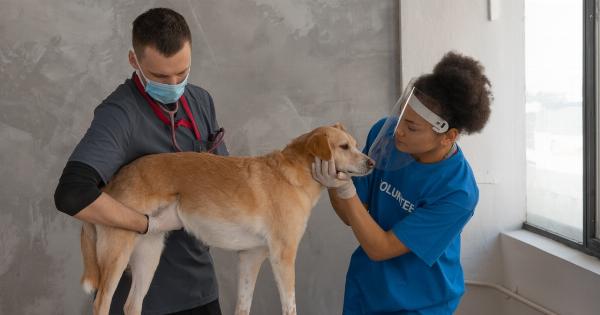Pets are an essential part of our lives, providing us with unconditional love, companionship, and joy. As responsible pet owners, it is our duty to ensure their well-being and take care of their medical needs.
Just like humans, pets can get sick or injured, and vet bills can quickly add up. This is where pet insurance can provide peace of mind and financial assistance. In this article, we will explore the concept of pet insurance, the benefits it offers, and the options available to pet owners.
What is pet insurance?
Pet insurance is a type of coverage that helps pet owners manage the costs of veterinary care for their pets.
It functions similarly to health insurance for humans, covering a portion of the expenses associated with medical treatments, surgeries, medications, and preventive care. Pet insurance allows pet owners to provide their furry friends with the best possible care without worrying about the financial burden.
Benefits of pet insurance
1. Financial assistance: Pet insurance helps pet owners manage unexpected veterinary expenses. It provides coverage for accidents, illnesses, and other medical conditions, alleviating the financial burden of expensive treatments or emergency surgeries.
2. Peace of mind: Knowing that your pet’s healthcare needs are covered can give you peace of mind. With pet insurance, you can make medical decisions for your furry friend based on their needs, rather than being limited by financial constraints.
3.
Comprehensive coverage: Pet insurance plans offer coverage for a wide range of services, including diagnostics, surgeries, hospitalization, medications, vaccinations, and preventive care such as flea and tick prevention, dental cleanings, and routine wellness exams.
4. Customizable options: Pet insurance policies often offer customizable options to suit individual pet owners’ needs.
Some policies allow you to select the level of coverage, deductibles, and reimbursement percentages, giving you more control over your pet’s healthcare expenses.
5. Lifesaving decisions: In some cases, expensive treatments or surgeries may be the only option to save your pet’s life.
With pet insurance, you won’t have to make the heart-wrenching decision of choosing between your beloved pet’s life and financial stability.
Types of pet insurance plans
There are various types of pet insurance plans available, each offering different levels of coverage. Here are the most common types:.
Accident-only coverage
This type of plan covers expenses related to accidents, including injuries resulting from falls, car accidents, or animal attacks. It does not typically cover illnesses or pre-existing conditions.
Accident-only coverage is a more budget-friendly option for pet owners who want to protect their pets from unexpected accidents.
Time-limited coverage
Time-limited coverage provides coverage for a specific period, usually 12 months, for both accidents and illnesses. However, it has a limit on the total amount paid out for each condition, and it usually excludes pre-existing conditions.
This type of coverage can be suitable for short-term illnesses or injuries.
Lifetime coverage
Lifetime coverage is the most comprehensive type of pet insurance. It covers accidents, illnesses, and chronic conditions throughout the pet’s lifetime. However, it usually comes at a higher premium cost.
Lifetime coverage is ideal for pet owners looking for long-term financial protection and comprehensive healthcare coverage for their furry friends.
Wellness plans
In addition to accident and illness coverage, some pet insurance plans offer wellness plans as an add-on option. These plans cover routine preventive care, such as vaccinations, dental cleanings, wellness exams, and flea and tick prevention.
Wellness plans can be a valuable addition to comprehensive coverage, ensuring that your pet receives regular preventive care.
Factors to consider when choosing pet insurance
When selecting a pet insurance plan, it’s essential to consider the following factors:.
1. Coverage and exclusions
Review the coverage offered by different insurance plans. Some plans may include only accidents and illnesses, while others may also cover hereditary and congenital conditions, wellness care, or alternative therapies.
Pay attention to exclusions, such as pre-existing conditions, breed-specific conditions, or certain treatments.
2. Deductibles and reimbursement
Deductibles are the amount you need to pay out of pocket before your insurance coverage kicks in. Consider the deductible options available and choose one that aligns with your budget.
Reimbursement percentages determine the portion of your vet bills that will be covered by the insurance company. Higher reimbursement percentages may result in higher premiums.
3. Waiting periods
Understand the waiting periods associated with the insurance plans. Waiting periods are the duration after purchasing the policy during which certain conditions or treatments are not covered.
Make sure you are aware of any waiting periods before needing immediate coverage.
4. Premium costs
Premium costs vary depending on factors such as your pet’s age, breed, location, and the level of coverage chosen. Compare the costs of different plans and ensure that the premium is affordable for your budget.
It’s also important to consider potential annual premium increases.
5. Customer reviews and reputation
Research the insurance company’s reputation and read customer reviews. Look for reliable providers with a strong track record of delivering quality coverage and excellent customer service.
Check if the company has a prompt and efficient claims process.
How to get pet insurance
Getting pet insurance is a straightforward process. Here are the general steps:.
1. Research and compare
Research different pet insurance providers and compare their plans, coverage options, prices, and customer reviews. Look for comprehensive coverage that suits your pet’s specific needs and your budget.
2. Get a quote
Contact the insurance providers you are interested in and request a quote. Provide them with the necessary information about your pet, such as their age, breed, and any pre-existing conditions, if applicable.
Ensure that the quote includes all the coverage options you are considering.
3. Review the policy
Once you receive the quote, carefully review the policy documents, including the terms and conditions, coverage limits, and exclusions. Seek clarification on any areas that need clarification or seem vague.
4. Enroll your pet
If you are satisfied with the policy and coverage, enroll your pet by filling out the necessary paperwork or completing the online enrollment process. Provide all required information accurately to avoid any issues during the claims process.
5. Understand the waiting period
After enrolling your pet, it’s important to understand the waiting period associated with the policy. Waiting periods are typically a few days for accidents and a few weeks for illnesses.
Be aware of the waiting period and ensure your pet receives immediate medical attention for any new conditions that may arise.
Making a claim
If your pet requires medical treatment, follow these steps to make a claim:.
1. Obtain and complete the claim form
Contact your pet insurance provider and request a claim form. Complete the form accurately, providing all the necessary information about your pet, the treatments received, and the veterinary costs incurred.
Make sure to attach any required supporting documents, such as invoices and medical records.
2. Submit the claim form
Submit the completed claim form along with the supporting documents to your insurance provider. Ensure that you keep copies of all documents for your records.
3. Wait for reimbursement
After submitting the claim, the insurance company will review the documentation and process the reimbursement. The processing time may vary depending on the insurance provider.
Once approved, you will receive reimbursement for the eligible expenses as per your policy terms.
Pet insurance is an investment in your pet’s well-being
While pet insurance comes with a cost, it is ultimately an investment in your pet’s health and well-being.
It provides financial protection and peace of mind, allowing you to make the best decisions for your furry friend’s healthcare without worrying about the high expenses. Before selecting a pet insurance plan, carefully consider your pet’s healthcare needs, your budget, and the coverage options available.
With the right pet insurance policy in place, you can ensure that your beloved companion receives the care they deserve throughout their life.





























